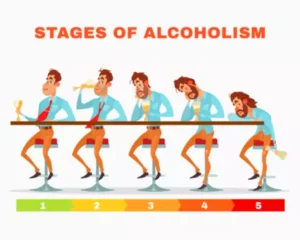
By comparing birth outcomes in upper middle class and lower class alcoholic mothers, Bingol and colleagues (1987) showed that economic or lifestyle factors play a role in the rate of FAS. They found that, although the intake of absolute alcohol was equivalent in the two groups, 2.7 percent of the upper middle class mothers had a child with FAS, compared with 40.5 percent of the lower class mothers. To obtain correct information regarding the quantity of alcohol consumed as well as the timing and duration of alcohol use during pregnancy, clinicians and researchers need reliable methods to determine alcohol exposure. Although biological tests are available to measure the amount of alcohol consumed, these tests reflect use over a very short time period and do not allow estimates of the pattern or duration of use to be made. In general, clinicians and researchers rely on the mother’s self-report of alcohol use. Self-reports may be inaccurate, however, because social pressures, fear of being labeled, and anxiety about losing custody of her child may lead a woman to underreport her alcohol consumption during pregnancy.
Supporting information
While it is good to know that women did not use alcohol to deal with the stress of pandemic, the number of people consuming alcohol during pregnancy is concerning. And, with the national uptick in drinking, patients may have more questions about alcohol use and overuse before, during, and after pregnancy. A report from Canada describes similar results, but a smaller percentage (6.7%) of women consuming alcohol in pregnancy.

CDC activities to address marijuana use during pregnancy
Early recognition of FASD and early emphasis on prevention of these problems and secondary disabilities are seen to be most useful in decreasing demands on parents 109. For instance, the prevalence of FASD was 62% among children with intellectual disabilities in care in Chile 92, over 52% among adoptees from Eastern Europe 93, and approximately 40% among children residing in orphanages in Lithuania 94. The highest prevalence estimates of Fetal Alcohol Syndrome (FAS), which ranged between 46% and 68%, were reported in Russian orphanages for children with developmental abnormalities 95. Additionally, the prevalence of FASD among youth in correctional services was over 23% in Canada 96, and over 14% among psychiatric care populations in the United States 97.
How to Talk to a Person Who is Drinking While Pregnant
Whatever the risks, many moms-to-be are choosing not to totally give up alcohol. A recent CDC study found that about one in eight pregnant women in the U.S. report drinking at least one alcoholic beverage in the past month. Healthcare providers must educate women about is it safe to drink alcohol while pregnant what we know regarding alcohol consumption during pregnancy. Women must be allowed to make their own decisions based on the amount of risk they are willing to accept. Many will say, “If there is any risk, I will follow the guidelines and not drink at all.” Others may examine the risks and choose to have an occasional drink.
Psychosocial Interventions to Reduce Other Prenatal Substance Use
Some studies have found that small amounts of alcohol consumption can have the same adverse effects on the fetus as binge drinking. The dangers of fetal alcohol exposure, initially identified in the late 1960’s, are entirely preventable if women abstain from Oxford House drinking during pregnancy. Surgeon General issued the first health advisory recommending that women who are pregnant or planning a pregnancy should not drink alcohol, and this advisory was repeated in 1990 and 1995.


The CDC suggests that up to 1 standard drink per day is not known to harm the infant, especially if a person waits at least 2 hours before nursing. However, higher alcohol levels can interfere with the letdown reflex that ejects milk and may cause the child to have sleep issues. The Centers for Disease Control and Prevention (CDC) advise that there is no known safe amount of alcohol use during pregnancy or while trying to get pregnant. It notes that all types of alcohol are equally harmful, including all spirits, wines, and beer. SAMHSA Treatment Locator — FindTreatment.govThe Substance Abuse and Mental Health Services Administration (SAMHSA) has a treatment facility locator.
- Alcohol, tobacco, and cannabis are the substances most frequently used during pregnancy, and opioid-exposed pregnancies have increased fourfold.
- Taking drugs during pregnancy also increases the chance of birth defects, premature babies, underweight babies, and stillborn births.
- The UK Chief Medical Officer recommends abstinence during pregnancy and many women comply, recognising the potential risks drinking poses to the fetus, the mother, and those around them.
- Some countries may not have available data on alcohol use during pregnancy (e.g., countries not included in WHO Member States) and though the global estimate is 10%, this varies widely across countries.
- The decreased adult NSC proliferation is possibly due to EV repair signaling mechanisms that need to be further investigated 94.
However, some mothers did recognise that development of problematic drinking could occur. Upon analysing the narratives, substantial similarity was discovered between the themes generated from the different participant groups with differences appearing in terms of views of healthcare professionals on alcohol https://ecosoberhouse.com/ consumption during pregnancy (S1 Fig). To avoid repetition and to clearly demonstrate the similarities and differences between the views of women and healthcare professionals (aim 3), in this section themes from all groups are presented together with any differences highlighted in terms of themes or theme content. Another prospective cross-sectional screening accuracy study compared five screening instruments on their ability to identify illicit drug, opioid, and alcohol use under privacy expectations consistent with current practice.
